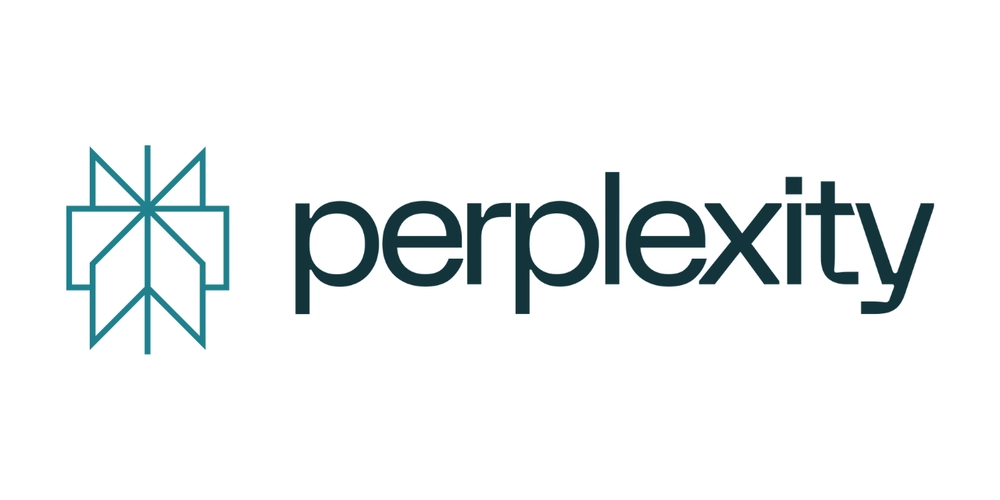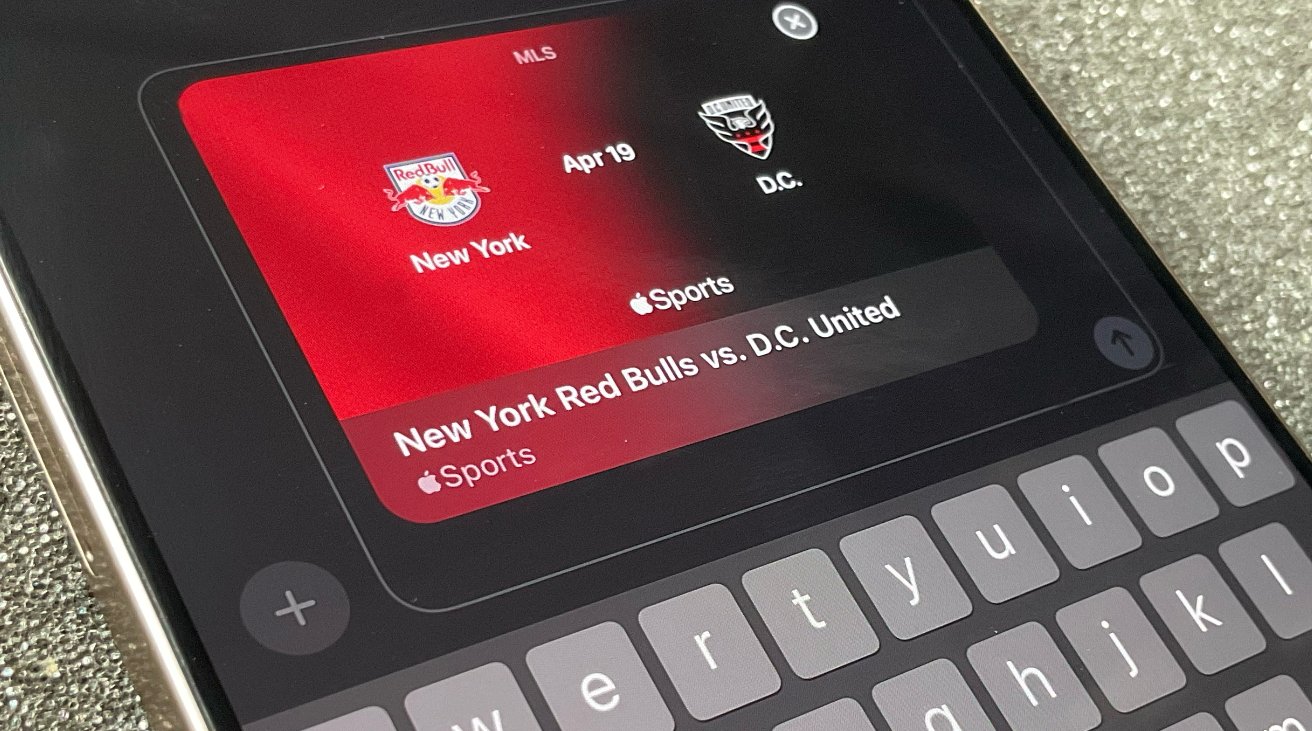Perplexity API Ultimate Guide
The Perplexity API brings sophisticated conversational AI right to your applications. What sets it apart? Unlike standard language models, Perplexity performs real-time online searches, delivering current information with proper citations. This means your apps can access AI that researches topics, provides factual answers, and—most importantly—cites its sources, creating a more trustworthy user experience. Developers familiar with GPT implementation will feel right at home. The API follows similar conventions to OpenAI, making the transition painless if you've worked with their system before. Perplexity offers several models to match your specific needs: sonar-pro: Their flagship model with advanced search capabilities and comprehensive answers sonar-small/medium: Efficient models for simpler queries and basic information retrieval mistral-7b: An open-source model balanced for various tasks codellama-34b: Specialized for code-related tasks llama-2-70b: A large model with broad knowledge capabilities The key difference between Perplexity and competitors like OpenAI and Anthropic? Real-time information with attribution. While GPT models excel at general knowledge and Claude offers nuanced understanding, Perplexity adds that crucial dimension of current, verified data. This Perplexity API Guide will walk you through authentication, parameter optimization, application integration, and compliance considerations—everything you need to build effectively with the Perplexity API. Getting Started with the Perplexity API Ready to build with the Perplexity API? Let's set up your account and get familiar with authentication basics. Registration and Account Setup Here's how to get started: Visit the Perplexity website and create a new account or log in. Navigate to the API settings page for your API dashboard. Add a valid payment method. Perplexity accepts credit/debit cards, Cash App, Google Pay, Apple Pay, ACH transfer, and PayPal. Purchase API credits to start using the service. Pro subscribers automatically receive $5 in monthly credits. Check out the API documentation to understand available endpoints, request formats, and authentication methods. Authentication and API Keys With your account ready, let's generate an API key: In the API settings tab, click "Generate API Key". Copy and securely store the generated key. Best practices for API key management: Never expose your key in client-side code or public repositories Use environment variables or secure vaults for storage Implement regular key rotation Monitor for unusual usage patterns Now you can start making requests using cURL or the OpenAI client library, which is compatible with Perplexity's API. Core Functionality of the Perplexity API The Perplexity API offers powerful AI capabilities through a REST interface that works seamlessly with OpenAI's client libraries. This compatibility makes integration into existing projects straightforward. Making Your First API Call After obtaining your API key, you're ready to start using the main endpoint at https://api.perplexity.ai/chat/completions. Here's a Python example: from openai import OpenAI YOUR_API_KEY = "INSERT API KEY HERE" client = OpenAI(api_key=YOUR_API_KEY, base_url="https://api.perplexity.ai") response = client.chat.completions.create( model="sonar-pro", messages=[ {"role": "system", "content": "You are a helpful assistant."}, {"role": "user", "content": "What is the capital of France?"} ] ) print(response.choices[0].message.content) Available Models and Their Capabilities Perplexity offers several specialized models. The current lineup includes: sonar-pro: Advanced search with grounding for complex queries sonar-small/medium: Efficient models for simpler tasks mistral-7b: Open-source model with good performance codellama-34b: Specialized for programming assistance llama-2-70b: Large model with broad capabilities Some models come in "online" variants that access real-time web information, providing fresher data at a higher cost. Essential Parameters Explained Key parameters to customize your requests include: model (required): Specifies which model to use messages (required): Conversation history and current query temperature: Controls randomness (0.0-1.0) max_tokens: Limits response length stream: Enables real-time streaming of responses top_p: Controls response diversity Advanced Implementation Strategies For sophisticated applications, you'll need more advanced implementation techniques. Incorporating feedback loops in API development can help enhance the AI's performance. Utilizing a programmable API gateway can help implement features like streaming responses and contextual conversation management. Streaming Responses Streaming shows responses as they're generated, creating a more natural conversational experience:

The Perplexity API brings sophisticated conversational AI right to your applications. What sets it apart? Unlike standard language models, Perplexity performs real-time online searches, delivering current information with proper citations. This means your apps can access AI that researches topics, provides factual answers, and—most importantly—cites its sources, creating a more trustworthy user experience.
Developers familiar with GPT implementation will feel right at home. The API follows similar conventions to OpenAI, making the transition painless if you've worked with their system before.
Perplexity offers several models to match your specific needs:
- sonar-pro: Their flagship model with advanced search capabilities and comprehensive answers
- sonar-small/medium: Efficient models for simpler queries and basic information retrieval
- mistral-7b: An open-source model balanced for various tasks
- codellama-34b: Specialized for code-related tasks
- llama-2-70b: A large model with broad knowledge capabilities
The key difference between Perplexity and competitors like OpenAI and Anthropic? Real-time information with attribution. While GPT models excel at general knowledge and Claude offers nuanced understanding, Perplexity adds that crucial dimension of current, verified data.
This Perplexity API Guide will walk you through authentication, parameter optimization, application integration, and compliance considerations—everything you need to build effectively with the Perplexity API.
Getting Started with the Perplexity API
Ready to build with the Perplexity API? Let's set up your account and get familiar with authentication basics.
Registration and Account Setup
Here's how to get started:
- Visit the Perplexity website and create a new account or log in.
- Navigate to the API settings page for your API dashboard.
- Add a valid payment method. Perplexity accepts credit/debit cards, Cash App, Google Pay, Apple Pay, ACH transfer, and PayPal.
- Purchase API credits to start using the service. Pro subscribers automatically receive $5 in monthly credits.
- Check out the API documentation to understand available endpoints, request formats, and authentication methods.
Authentication and API Keys
With your account ready, let's generate an API key:
- In the API settings tab, click "Generate API Key".
- Copy and securely store the generated key.
- Best practices for API key management:
- Never expose your key in client-side code or public repositories
- Use environment variables or secure vaults for storage
- Implement regular key rotation
- Monitor for unusual usage patterns
Now you can start making requests using cURL or the OpenAI client library, which is compatible with Perplexity's API.
Core Functionality of the Perplexity API
The Perplexity API offers powerful AI capabilities through a REST interface that works seamlessly with OpenAI's client libraries. This compatibility makes integration into existing projects straightforward.
Making Your First API Call
After obtaining your API key, you're ready to start using the main endpoint at https://api.perplexity.ai/chat/completions. Here's a Python example:
from openai import OpenAI
YOUR_API_KEY = "INSERT API KEY HERE"
client = OpenAI(api_key=YOUR_API_KEY, base_url="https://api.perplexity.ai")
response = client.chat.completions.create(
model="sonar-pro",
messages=[
{"role": "system", "content": "You are a helpful assistant."},
{"role": "user", "content": "What is the capital of France?"}
]
)
print(response.choices[0].message.content)
Available Models and Their Capabilities
Perplexity offers several specialized models. The current lineup includes:
- sonar-pro: Advanced search with grounding for complex queries
- sonar-small/medium: Efficient models for simpler tasks
- mistral-7b: Open-source model with good performance
- codellama-34b: Specialized for programming assistance
- llama-2-70b: Large model with broad capabilities
Some models come in "online" variants that access real-time web information, providing fresher data at a higher cost.
Essential Parameters Explained
Key parameters to customize your requests include:
- model (required): Specifies which model to use
- messages (required): Conversation history and current query
- temperature: Controls randomness (0.0-1.0)
- max_tokens: Limits response length
- stream: Enables real-time streaming of responses
- top_p: Controls response diversity
Advanced Implementation Strategies
For sophisticated applications, you'll need more advanced implementation techniques. Incorporating feedback loops in API development can help enhance the AI's performance. Utilizing a programmable API gateway can help implement features like streaming responses and contextual conversation management.
Streaming Responses
Streaming shows responses as they're generated, creating a more natural conversational experience:
response_stream = client.chat.completions.create(
model="sonar-pro",
messages=messages,
stream=True,
)
for chunk in response_stream:
if chunk.choices[0].delta.content is not None:
print(chunk.choices[0].delta.content, end="", flush=True)
Contextual Conversation Management
For multi-turn conversations, efficiently managing context is crucial. Options include:
- Rolling Context Window: Keep only recent exchanges
- Summarization: Periodically condense conversation history
- Context Pruning: Remove less relevant parts while preserving key information
Prompt Engineering for Perplexity
Effective prompt engineering dramatically improves results. Key techniques include:
- Clear System Instructions: Define the AI's role and behavior
- Structured Output Templates: Request specific response formats
- Few-shot Learning: Provide examples of desired inputs and outputs
- Focus Modes: Specify academic, creative, or technical focus for Sonar models
Exploring Perplexity Alternatives
If you're looking for alternatives to the Perplexity API, several other platforms provide similar functionality, each with unique features and strengths. Here are a few worth considering:
OpenAI API - OpenAI’s API offers powerful models like GPT-4 for natural language understanding and generation. Unlike Perplexity, which focuses on real-time information retrieval, OpenAI’s models excel at general knowledge, creative tasks, and nuanced conversation. The integration is seamless and well-documented, making it a popular choice for a wide range of use cases.
Anthropic API - Anthropic’s API powers Claude, a model designed to offer safer, more interpretable AI responses. While similar to Perplexity in providing conversational capabilities, Claude emphasizes user safety and ethical AI, with a focus on reducing harmful or biased outputs. It’s a great choice for applications that prioritize ethical AI behavior.
Google Cloud AI - Google’s AI services, including their Natural Language API, are versatile for various tasks like sentiment analysis, translation, and content classification. Unlike Perplexity’s real-time search, Google’s API focuses more on structured data analysis, making it suitable for organizations already integrated into the Google ecosystem.
Cohere API - Cohere offers large language models tailored for specific use cases like semantic search and content generation. Known for its simplicity and strong performance in fine-tuning for niche applications, Cohere differs from Perplexity in that it allows more granular control over model behavior, making it a good option for businesses with highly specific needs.
These alternatives provide varied functionalities, from real-time searches to content creation, so you can choose the best tool for your project’s unique requirements.
Integration and Use Cases
The Perplexity API can be integrated across various platforms to power intelligent features. Whether you're looking to enhance user experience or explore API monetization strategies, effective integration is key.
Web Application Integration
For React applications, create a custom hook:
function usePerplexity() {
const [loading, setLoading] = useState(false);
const [error, setError] = useState(null);
const client = new OpenAI({
apiKey: process.env.REACT_APP_PERPLEXITY_API_KEY,
baseURL: 'https://api.perplexity.ai',
});
const generateResponse = async (prompt) => {
setLoading(true);
setError(null);
try {
const response = await client.chat.completions.create({
model: "sonar-pro",
messages: [{ role: "user", content: prompt }],
});
setLoading(false);
return response.choices[0].message.content;
} catch (err) {
setError(err.message);
setLoading(false);
return null;
}
};
return { generateResponse, loading, error };
}
Backend Services and Microservices
For backend integration, create an API wrapper service:
// Express.js example
const express = require('express');
const { OpenAI } = require('openai');
const app = express();
app.use(express.json());
const client = new OpenAI({
apiKey: process.env.PERPLEXITY_API_KEY,
baseURL: 'https://api.perplexity.ai',
});
app.post('/api/generate', async (req, res) => {
try {
const { prompt } = req.body;
const response = await client.chat.completions.create({
model: "sonar-pro",
messages: [{ role: "user", content: prompt }],
});
const result = response.choices[0].message.content;
res.json({ result });
} catch (error) {
res.status(500).json({ error: error.message });
}
});
Mobile Application Integration
Mobile apps should optimize for battery life and handle intermittent connectivity. Building an efficient API integration platform can help manage these challenges:
// Cache utility for mobile
const cacheResponse = async (key, data) => {
try {
await AsyncStorage.setItem(
`perplexity_cache_${key}`,
JSON.stringify({
data,
timestamp: Date.now()
})
);
} catch (error) {
console.error('Error caching data:', error);
}
};
Error Handling and Debugging
Robust error handling is essential for production applications. Understanding common error types and strategies to address them can help you improve error handling.
Common Error Types
The Perplexity API may return various error types:
- Authentication errors: Invalid API keys
- Rate limiting: Too many requests in a short period
- Invalid parameters: Incorrect model names or parameter values
- Server errors: Internal API issues
Implementing Retry Logic
For transient errors, implement exponential backoff:
import time
import random
def make_request_with_retry(client, messages, max_retries=5):
retries = 0
while retries < max_retries:
try:
response = client.chat.completions.create(
model="sonar-pro",
messages=messages
)
return response
except Exception as e:
if "rate_limit" in str(e).lower():
sleep_time = (2 ** retries) + random.random()
print(f"Rate limited. Retrying in {sleep_time} seconds...")
time.sleep(sleep_time)
retries += 1
else:
raise e
raise Exception("Max retries exceeded")
Monitoring and Logging
Implement comprehensive logging and utilize API monitoring tools to track API usage and troubleshoot issues:
import logging
import json
logging.basicConfig(level=logging.INFO)
logger = logging.getLogger("perplexity-api")
def log_api_call(prompt, response, error=None):
log_data = {
"timestamp": time.time(),
"prompt": prompt,
"tokens_used": response.usage.total_tokens if response else None,
"error": str(error) if error else None
}
logger.info(json.dumps(log_data))
Cost Optimization Strategies
Implementing cost-control measures helps manage API expenses. Monitoring and optimizing token usage can help control costs and enhance API performance.
Token Usage Management
Monitor and optimize token usage:
- Keep prompts concise and focused
- Use smaller models for simpler tasks
- Implement token counting to predict costs
import tiktoken
def count_tokens(text, model="cl100k_base"):
encoder = tiktoken.get_encoding(model)
return len(encoder.encode(text))
def estimate_cost(prompt, model="sonar-pro"):
tokens = count_tokens(prompt)
# Approximate costs (check current pricing)
rates = {
"sonar-pro": 0.0005,
"sonar-small": 0.0001,
"sonar-medium": 0.0003
}
estimated_cost = tokens * rates.get(model, 0.0005) / 1000
return tokens, estimated_cost
Model Selection Guidelines
Choose the appropriate model based on task requirements:
- Use sonar-small for simple information retrieval
- Select sonar-medium for balanced performance and cost
- Reserve sonar-pro for complex queries needing up-to-date information
Implementing Budget Controls
Set usage limits to prevent unexpected costs:
class BudgetManager:
def __init__(self, monthly_budget=100):
self.monthly_budget = monthly_budget
self.current_usage = 0
def track_usage(self, tokens, model):
rates = {
"sonar-pro": 0.0005,
"sonar-small": 0.0001,
"sonar-medium": 0.0003
}
cost = tokens * rates.get(model, 0.0005) / 1000
self.current_usage += cost
return self.current_usage
def check_budget(self):
if self.current_usage >= self.monthly_budget:
return False
return True
Security and Compliance Considerations
Implementing proper security measures, including following API security best practices, is critical when using AI APIs. In addition to data privacy, applying secure query handling methods ensures that user inputs are sanitized and protected.
Data Privacy Best Practices
Protect user data when using the API:
- Minimize sensitive data in prompts
- Implement data anonymization where possible
- Establish clear data retention policies
Compliance with Regulations
Ensure API usage complies with relevant regulations:
- GDPR: Obtain proper consent for data processing
- CCPA: Provide disclosure about AI-generated content
- HIPAA: Avoid sending protected health information in prompts
Authentication and Authorization
Implement robust security for your API wrapper:
// Example JWT authentication for API wrapper
const jwt = require('jsonwebtoken');
// Middleware to verify JWT
function authenticateToken(req, res, next) {
const authHeader = req.headers['authorization'];
const token = authHeader && authHeader.split(' ')[1];
if (!token) return res.sendStatus(401);
jwt.verify(token, process.env.JWT_SECRET, (err, user) => {
if (err) return res.sendStatus(403);
req.user = user;
next();
});
}
// Protected route
app.post('/api/generate', authenticateToken, async (req, res) => {
// Process API request with authenticated user
});
Explore How the Perplexity API Can Enhance Your Workflow
The Perplexity API offers a powerful combination of conversational AI with real-time search capabilities, making it an excellent choice for applications requiring current, cited information. By following the strategies outlined in this guide, you can effectively implement the API across web, backend, and mobile platforms while optimizing for performance, cost, and security.
As you build with the Perplexity API, remember that proper prompt engineering, context management, and error handling are key to creating reliable AI-powered features. Select the appropriate model for your specific use case and implement cost controls to manage your API budget effectively.
Ready to manage and secure your Perplexity API implementation? Zuplo provides a developer-friendly API gateway that makes it easy to add authentication, rate limiting, and monitoring to your API endpoints. Get started with Zuplo today to build a production-ready API layer for your Perplexity implementation.





























![[Webinar] AI Is Already Inside Your SaaS Stack — Learn How to Prevent the Next Silent Breach](https://blogger.googleusercontent.com/img/b/R29vZ2xl/AVvXsEiOWn65wd33dg2uO99NrtKbpYLfcepwOLidQDMls0HXKlA91k6HURluRA4WXgJRAZldEe1VReMQZyyYt1PgnoAn5JPpILsWlXIzmrBSs_TBoyPwO7hZrWouBg2-O3mdeoeSGY-l9_bsZB7vbpKjTSvG93zNytjxgTaMPqo9iq9Z5pGa05CJOs9uXpwHFT4/s1600/ai-cyber.jpg?#)












































































































































![[The AI Show Episode 144]: ChatGPT’s New Memory, Shopify CEO’s Leaked “AI First” Memo, Google Cloud Next Releases, o3 and o4-mini Coming Soon & Llama 4’s Rocky Launch](https://www.marketingaiinstitute.com/hubfs/ep%20144%20cover.png)





































































































































































































![Rogue Company Elite tier list of best characters [April 2025]](https://media.pocketgamer.com/artwork/na-33136-1657102075/rogue-company-ios-android-tier-cover.jpg?#)







































































_Andreas_Prott_Alamy.jpg?width=1280&auto=webp&quality=80&disable=upscale#)









































































































![Apple Watch Series 10 Back On Sale for $299! [Lowest Price Ever]](https://www.iclarified.com/images/news/96657/96657/96657-640.jpg)
![EU Postpones Apple App Store Fines Amid Tariff Negotiations [Report]](https://www.iclarified.com/images/news/97068/97068/97068-640.jpg)
![Apple Slips to Fifth in China's Smartphone Market with 9% Decline [Report]](https://www.iclarified.com/images/news/97065/97065/97065-640.jpg)



































































































































